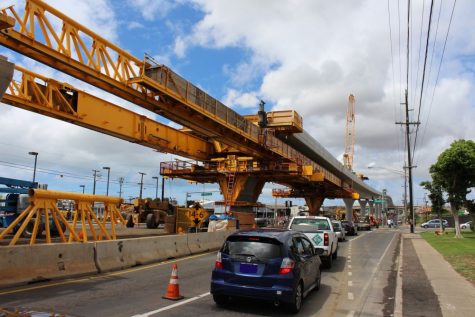Rail News
October 5, 2017

Last week, September 5th, Governor David Ige signed a bill that would generate 2.4 billion dollars to bail-out the failing project. Back in 2011 the city started the project with an estimated cost of 5.2 billion dollars and was expected to reduce traffic congestion by 18 percent. The first civilian rides on the rail were supposed to take place in 2017. Nine months into 2017 and the rail has had a total of zero passenger rides so far. The project is now estimated by civil engineers to be 13 billion dollars, compared to the original 5.2 billion dollars. It is estimated by Honolulu city officials that by 2030 traffic congestion will spike by 23 percent. The rail, if 116,000 people ride it daily, will decrease traffic congestion in 2030 to 21 percent. In addition to this, former Governor Linda Lingle conducted an independent review of the projects’ rider count and found that the number of riders would be too few to keep the rail operating. The bill itself will do the following: extend the General Excise Tax on Oahu three more years to 2030, raise the Transient Accommodation Tax to 10.25 percent till 2030, permanently increase the county’s’ share of the Transient Accommodation Tax from $93 million to $103 million, reduce the state Department of Taxation’s administrative fee on the GET surcharge from 10 percent to one percent, create a Mass Transit Special Fund to review and disburse funds to the city for its rail costs, and require a state-run audit of the rail project in addition to annual financial reviews.
“The project won’t be completed until Maia is an adult with children of her own.”
To really put the rail into perspective state Senator John Green said: “When we passed that first increase in the GET, my wife and I just learned that week we were expecting our first child,” “Maia is 10 years old today. This week the tax that was supposed to be temporary, will be extended at least until she’s out of college. And the project won’t be completed until Maia is an adult with children of her own.”







